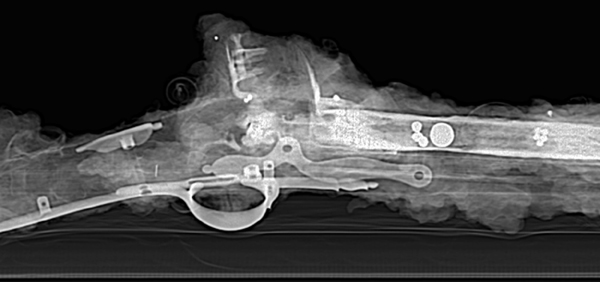Dave Orchard
Pilgrim
- Joined
- Dec 16, 2016
- Messages
- 89
- Reaction score
- 39
I have loaded roundball and 3 "pairs" of buckshot of slightly less than 1/2 bore dia. Each in Charleville, 20 ga. Trade gun, 24 ga. Fusil as well as breech loading smoothbore.
It's easy to see why buck n' ball load was popular with Roger's Rangers.
Groups at 20 to 25 yds.are pretty similar regardless of caliber or ML vs breech loader: ball hits point of aim and 5/6 buckshot print evenly around the larger cal.hole like spokes of a wheel. (#6 is almost always a "flyer"....go figure.)
B & B has no purpose I can think readily of in the hunting field, but it is interesting to experiment with anti-personellloads that were used centuries ago.
(There is one factory 12ga. Cart. Loaded w/buck & single ball.)
Dave
It's easy to see why buck n' ball load was popular with Roger's Rangers.
Groups at 20 to 25 yds.are pretty similar regardless of caliber or ML vs breech loader: ball hits point of aim and 5/6 buckshot print evenly around the larger cal.hole like spokes of a wheel. (#6 is almost always a "flyer"....go figure.)
B & B has no purpose I can think readily of in the hunting field, but it is interesting to experiment with anti-personellloads that were used centuries ago.
(There is one factory 12ga. Cart. Loaded w/buck & single ball.)
Dave







